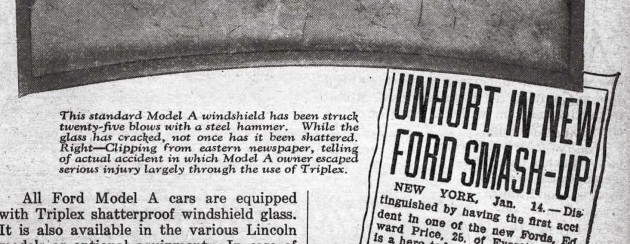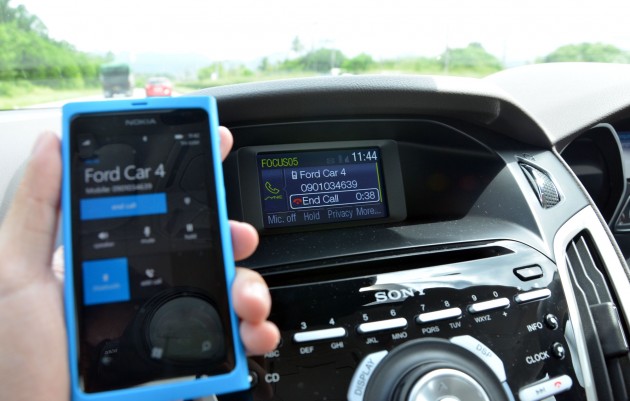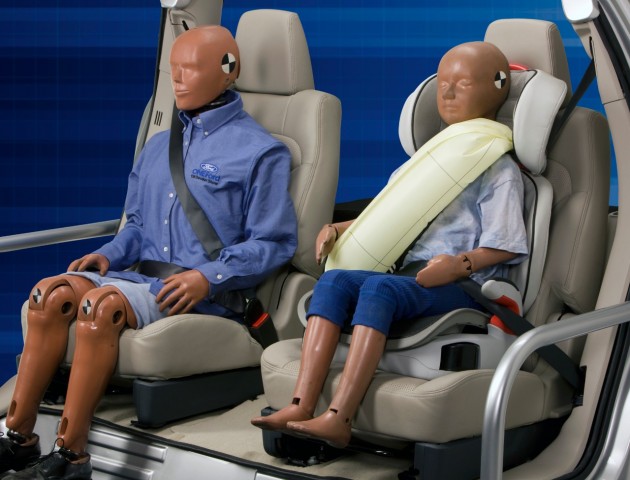Safety has always been at the core of Ford Motor Company’s product development throughout its 110-year history. The Detroit-based carmaker is a company of firsts – the first mass-produced car (1909), the first company to use a moving assembly line (1913), even the first power sunroof (1971) – and built into this legacy of firsts is industry-leading tech that keeps drivers and passengers safe.
There are too many milestones in Ford’s heritage of safety first to mention here, but here are a few significant safety firsts by the carmaker:
• In 1927, Ford was the first company to feature standard safety glass – designed to break into very small, rock-like pieces upon impact, rather than shards or jagged splinters.
• In 1955, Ford was the first automaker to offer safety belts.
• In 1957, Ford was the first automaker to begin airbag research and the first to offer a child restraint system, the Astro-Guard.
• In 1968, Ford became the first manufacturer to produce vehicles with anti-lock brake system (ABS), preventing wheels from locking up.
• In 1993, Ford was the first to provide driver and passenger airbags as standard across most of its vehicles.
• With its MY 1999 vehicles, Ford became the first automaker to offer head and chest side airbags.
• In the same year, Ford was the first to offer the safety belt-reminder technology, BeltMinder.
• Also in 1999, Ford was the first to introduce emergency trunk releases as standard equipment throughout its car line-up.
• In 2002, Ford offered Roll Stability Control, which goes beyond most stability control systems by monitoring and controlling roll motion to reduce the risk of rollover.
• In 2011, Ford introduced the first-ever inflatable seat belts, designed to enhance protection for rear-seat occupants by spreading the crash force over five times the body area than conventional seat belts, reducing pressure on the chest and helping control head and neck motion.
A recent safety innovation is Ford’s next-generation airbag, designed to provide advanced crash protection through the use of a reconfigured curve-shaped tether that pulls in the lower section to create a “pocket,” lessening the impact of the airbag on the driver’s chest and ribs. Ford’s side airbag system uses a combination of pressure- and acceleration-based sensors to predict severity of the crash and to deploy the side airbags.
Ford employs a number of high-strength steels in key structural areas of select vehicles. These various steels are up to four times harder than normal high-strength steel, making them much stronger and stiffer, yet they are also lightweight, 10 to 15% thinner than normal steel, enabling weight reduction and improved fuel economy without sacrificing strength. All Ford vehicles include boron steel in the door intrusion beams, helping protect occupants in side-impact collisions.
There have been awards to recognise Ford’s efforts in vehicle safety. The new Ford Focus earned a Top Safety Pick+ rating from the Insurance Institute for Highway (IIHS), one of only six small cars to earn top marks. The Focus previously earned the US federal government’s highest safety rating – a five-star Overall Vehicle Score from the National Highway Traffic Safety Administration (NHTSA).
In 2013, Ford dominated the Euro NCAP 2012 “best-in-class” safety awards, winning three out of seven categories, more than any other manufacturer. The new Ford Kuga, recently launched in Malaysia, topped the SUV sector with the highest-ever rating for a mid-sized SUV. Closer to home, the pre-facelift Ford Fiesta received the maximum five-stars in the inaugural ASEAN NCAP frontal collision crash test.
Today, keeping drivers and passengers safe from bad habits that endanger them while on the road is a Ford priority. Personal devices like mobile phones, tablets, GPS devices and music players offer new ways for us to connect and communicate, but they can also have the unfortunate ability to take our eyes off the road and our hands away from the wheel. Ford safety systems designed with this in mind include SYNC with voice control, BLIS and Active City Stop, all available and explained in our third-gen Ford Focus review.
In 2001, Ford was the first automaker in North America to invest in a full-motion-based driving simulator, known as the VIRtual Test Track EXperiment (VIRTTEX), allowing the study of driver reaction and behaviour in a controlled lab setting. Ford is currently upgrading this simulator with improved image-rendering tech and capability to study driver performance, helping in the development of current and future safety and driver aid technologies. Info has already been used in developing drowsy driver alerts and lane departure warning.
Another safety initiative is Ford’s use and research of virtual crash-test dummies, known as Human Body Models. These are designed with precise detail to help simulate human response in crashes. Ford is launching one of the world’s first research projects to create a digital model of a human child with more lifelike re-creations of the skeletal structure, internal organs and brain. As a child’s body is very different than an adult’s, a more lifelike model could help Ford improve occupant safety for the little ones.
From revolutionary building materials and more effective airbags, to improved testing methods and the use of virtual technology, Ford is a safety pioneer in the automotive world. The company’s research, development, testing and innovating are the hallmarks of Ford’s promise to go further for its customers, offering class-leading vehicles that not only are a thrill to drive, but are also built to protect.









